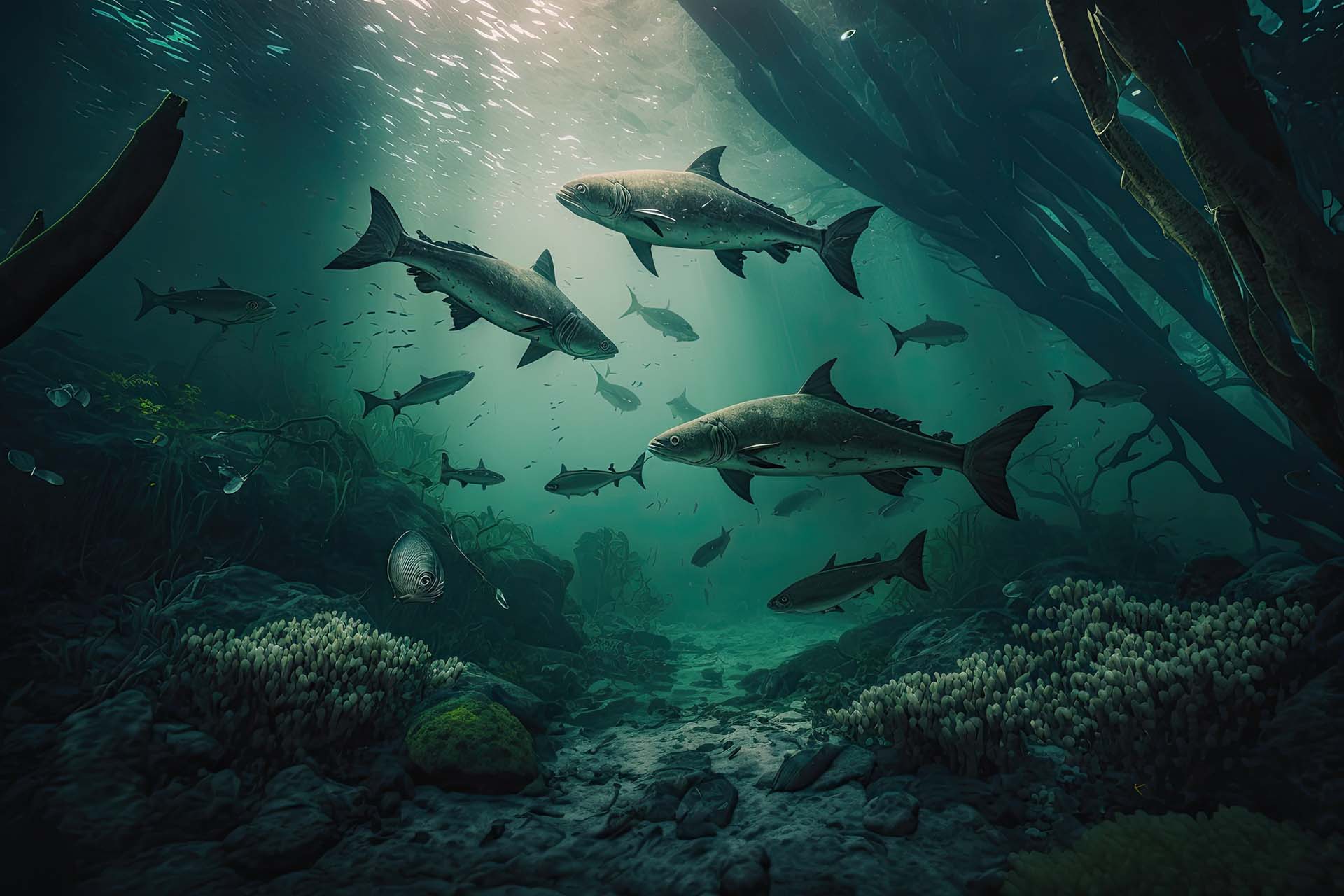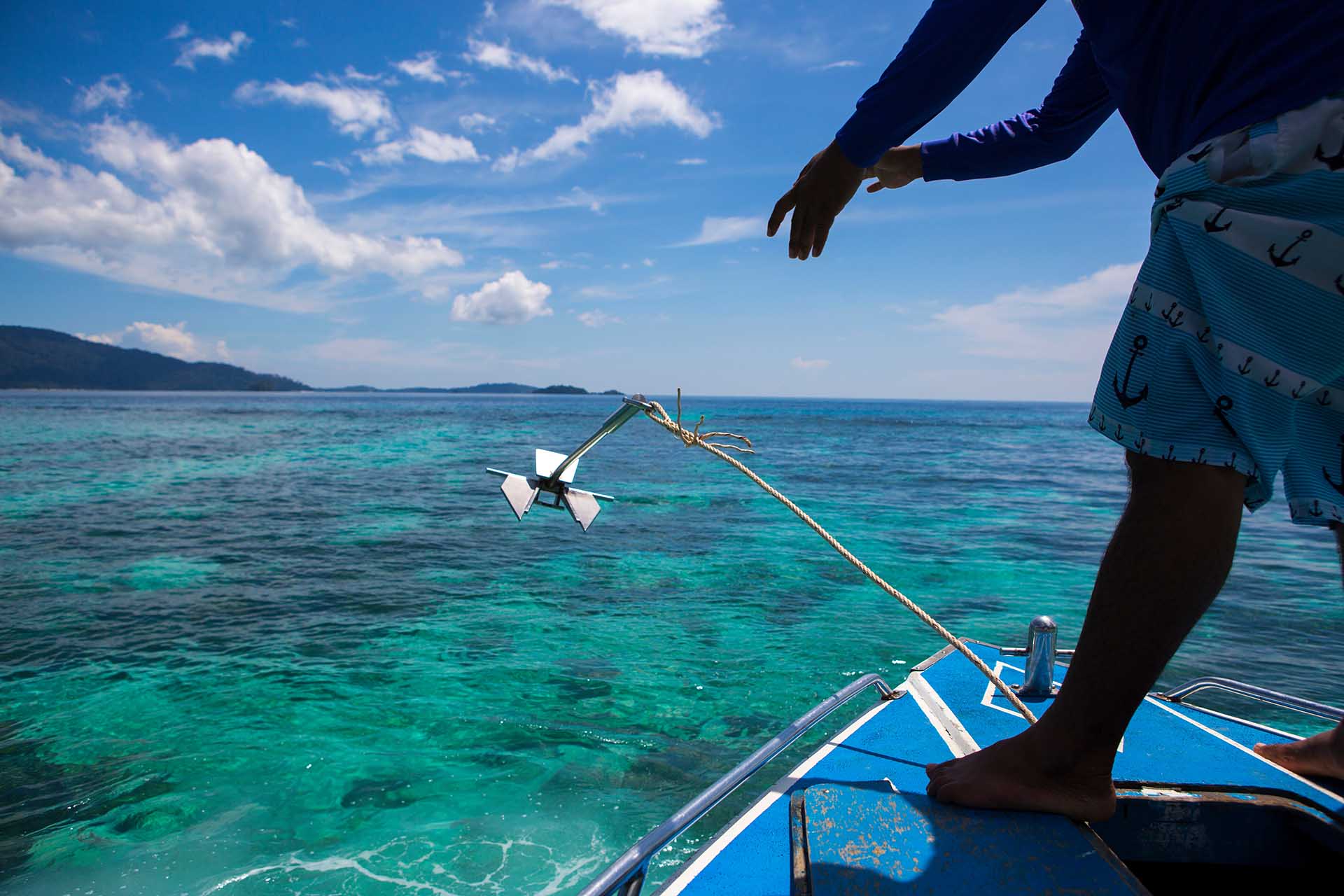Do you ever find yourself debating which type of fish is best for a fishing trip? Do you crave the thrill of hooking a few rainbow trout, or do you want to reel in something more substantial, like the mighty salmon? Trout vs. salmon – let’s tackle the facts and explain why each fish makes its mark as an ultimate catch. It’s time to dive into this fishy battle.
Round 1: Physical Characteristics
Trout and salmon are often confused because of their similar appearances, especially by beginner anglers. No matter what specific type you’re comparing, for example, steelhead trout vs. salmon or maybe rainbow trout vs. salmon, both species have streamlined bodies with silvery scales and are known for their delicious taste.
However, there are some notable differences in their physical features:
- Size – salmon are typically larger than trout, growing up to 30+ pounds, while trout usually max out at around 20 pounds,
- Color – salmon are often more brightly colored than trout, with a distinct orange or pink hue, while trout are usually dark green or brown with spots,
- Teeth – salmon have sharp, pointy teeth, quite different from trout’s more rounded teeth,
- Fins – trout have small, evenly spaced fins, as opposed to salmon’s larger and more widely spaced fins.
Looks Aren’t Everything, but They Can Tell You a Lot About a Certain Species
Knowing the physical characteristics of a fish is important for more than just identifying the species. Actually, this aspect greatly affects the behavior and habitat of a certain fish. For example, trout are streamlined and have small fins, which allow them to navigate swiftly in fast-moving freshwater environments. Because of this, they are one of the most common fish to catch throughout the world.
On the other hand, salmon have larger, more widely-spaced fins and are known for their impressive swimming capabilities that allow them to migrate from freshwater to the ocean and back again, so they’re considered a common saltwater species. They also prefer warmer temperatures compared to cold-loving trout.
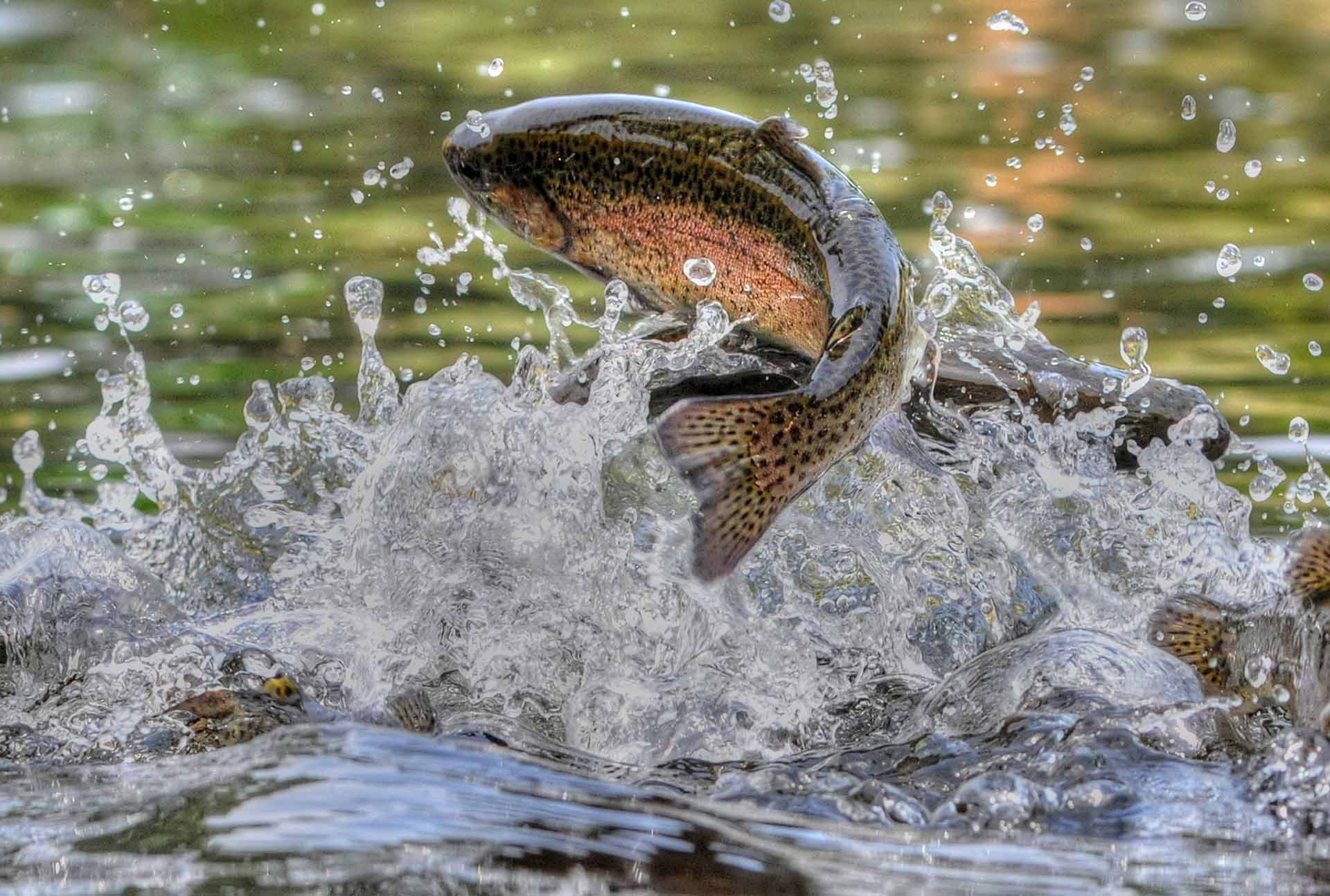
Round 2: Habitat and Distribution
These species might look similar, but when it comes to habitat preferences and distributions, they are quite different. This is important to know in order to figure out the right location for your next fishing trip, but also to understand the behavior and survival of each fish. The differences in their preferred habitats mean these species have different predators and prey, which in turn influences their feeding habits and behavior.
Where Can You Fish for Trout
As mentioned, trout are freshwater fish that prefer clear, cold water, so they’re usually found in rivers, streams, and lakes throughout North America, Eurasia, and other parts of the world. Here are the most common types of this species, along with their preferred habitats:
| Type | Habitat |
|---|---|
| Rainbow | Lakes, rivers, and streams in North America, Europe, and Asia |
| Brown | Streams and rivers in Europe, Australia, and New Zealand |
| Brook | Cold, clear streams and ponds in Eastern North America |
| Cutthroat | Mountainous rivers and streams in Western North America |
| Steelhead | Coastal streams, rivers, and lakes in North America and Asia |
Where Can You Fish for Salmon
Salmon are anadromous fish, meaning they are born in freshwater but spend most of their lives in the ocean before returning to freshwater to spawn. They are found in rivers and oceans around the world, with the Pacific Northwest and Alaska being famous for their large salmon runs. Let’s take a look at where you can find different types of this fish:
| Type | Habitat |
|---|---|
| Chinook | Pacific Ocean, coastal streams, and rivers in North America and Asia |
| Coho | Pacific Ocean, coastal streams, and rivers in North America and Asia |
| Sockeye | Pacific and Arctic Oceans, coastal streams, and rivers in North America and Asia |
| Pink | Pacific and Arctic Oceans, coastal streams, and rivers in North America and Asia |
| Atlantic | Atlantic Ocean, coastal streams, and rivers in Europe and North America |
Round 3: Nutritional Value
Nutritional value is an important factor in the popularity of a certain species as a food source, so it plays a significant role in what you’re trying to get caught on your fish hook. Compared to other categories in the battle of salmon vs. trout, here we have a clear winner, and you probably have a hunch about who it is.
These Species Are Super Healthy Food Sources Thanks to Omega-3 Fatty Acids
Although both species are considered healthy sources of protein, salmon is typically richer in omega-3 fatty acids than its contender, making it a more heart-healthy choice. Omega-3 fatty acids help to reduce inflammation and lower the risk of heart disease, which is why eating fatty fish such as salmon at least twice a week is recommended by the American Heart Association.
Additionally, this fish also contains more vitamin D, which plays a crucial role in bone health and helps to boost the immune system. All in all, while it’s good for both of these species to appear on your plate from time to time, salmon is ultimately the healthier and, consequently, more popular choice.
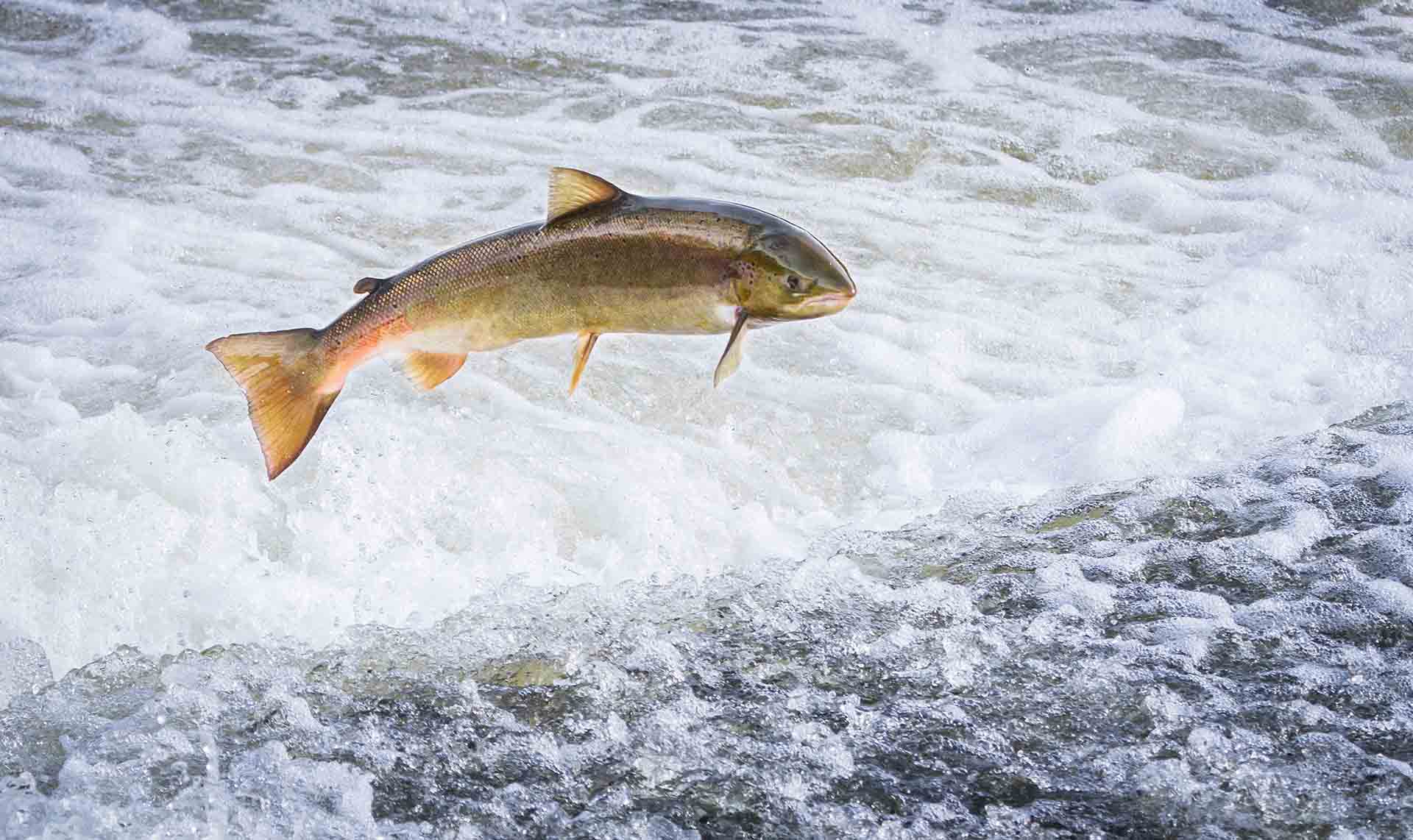
Round 4: Fishing Techniques
No matter what you’re trying to catch, choosing the right fishing technique based on the type of fish and the conditions of the environment is crucial for a successful fishing experience. Of course, different species require different methods of catching, whether it be trolling, fly fishing, or baitcasting.
Moreover, different angling styles require special gear, from the fishing rod all the way to the tied fish hook. The choice of the fishing line, as well as fish bait, can also affect the success of the fishing trip. Weather conditions and water temperatures are also unavoidable factors, as they affect the behavior of fish and make certain techniques more effective than others. So, let’s take a look at the most fruitful ways you should angle for the species in question.
What Fishing Techniques Can You Use for Catching Salmon?
Salmon can be caught using a variety of fishing techniques, including trolling, drift fishing, fly fishing, and baitcasting. Each of these methods comes with its own set of challenges and requires specific rods and fishing reels, as well as a thorough understanding of the environment, to be most effective.
Trolling involves pulling a line with a lure or bait behind a moving boat, allowing the lure to reach the desired depth for targeting this species, while drift fishing involves a baited hook and sinker, allowing the current to carry it downstream and attract fish. Baitcasting entails using heavier tackle and fish bait to cast into deeper waters. Compared to these techniques, fly fishing is quite a delicate method, but once you get the hang of it, you’ll be able to target salmon in shallow waters.
What Fishing Techniques Can You Use for Catching Trout?
Even though these species inhabit different locations, methods used for landing trout are more or less comparable to its contender, with nymph fly fishing and baitcasting also being popular choices among anglers. However, targeting this species is also effectively done by either spinning or drift fishing.
The first technique entails a lightweight line and spinning reel, and it’s great for landing smaller catches in shallower waters. On the other hand, drift fishing uses weighted lines and bait or lures, allowing them to drift naturally along the current.
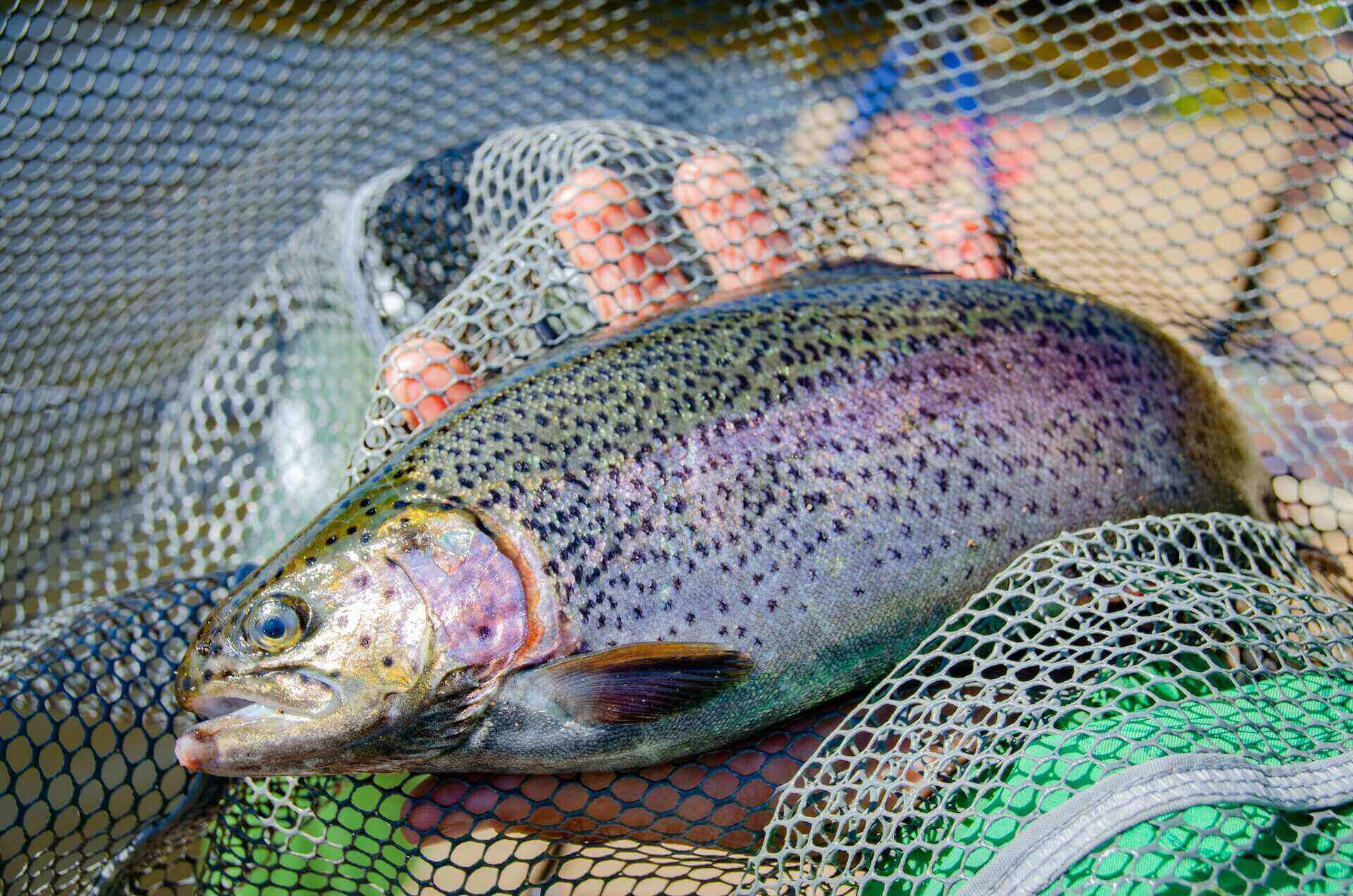
Round 5: Culinary Uses
When it comes to their culinary uses, these species are quite different from one another. While both can be grilled, baked, or smoked, popular recipes for these delicacies have significant differences in taste.
First, here are some popular dishes with salmon you should definitely try:
- Grilled salmon with lemon and herbs,
- Smoked salmon and cream cheese bagels,
- Salmon poke bowls,
- Grilled salmon with garlic and dill,
- Teriyaki salmon with sesame seeds and green onion.
Now, let’s take a look at some delicious meals made with its contender:
- Pan-fried trout with lemon and herbs,
- Broiled trout with garlic butter,
- Grilled trout with tomato and onion salsa,
- Trout cakes with remoulade sauce,
- Trout and vegetable skewers with herb dressing.
As you can gather, trout is more commonly used in dishes such as fish chowders, stews, and soups, while salmon is a frequent ingredient in sushi, sushi rolls, and sashimi and is often served raw or lightly seared.
Another important difference is the level of fat content, with salmon generally being higher in fat and thus providing a richer culinary experience. However, it all comes down to your taste buds, and many anglers will choose a good-old stew over sushi any day of the week.
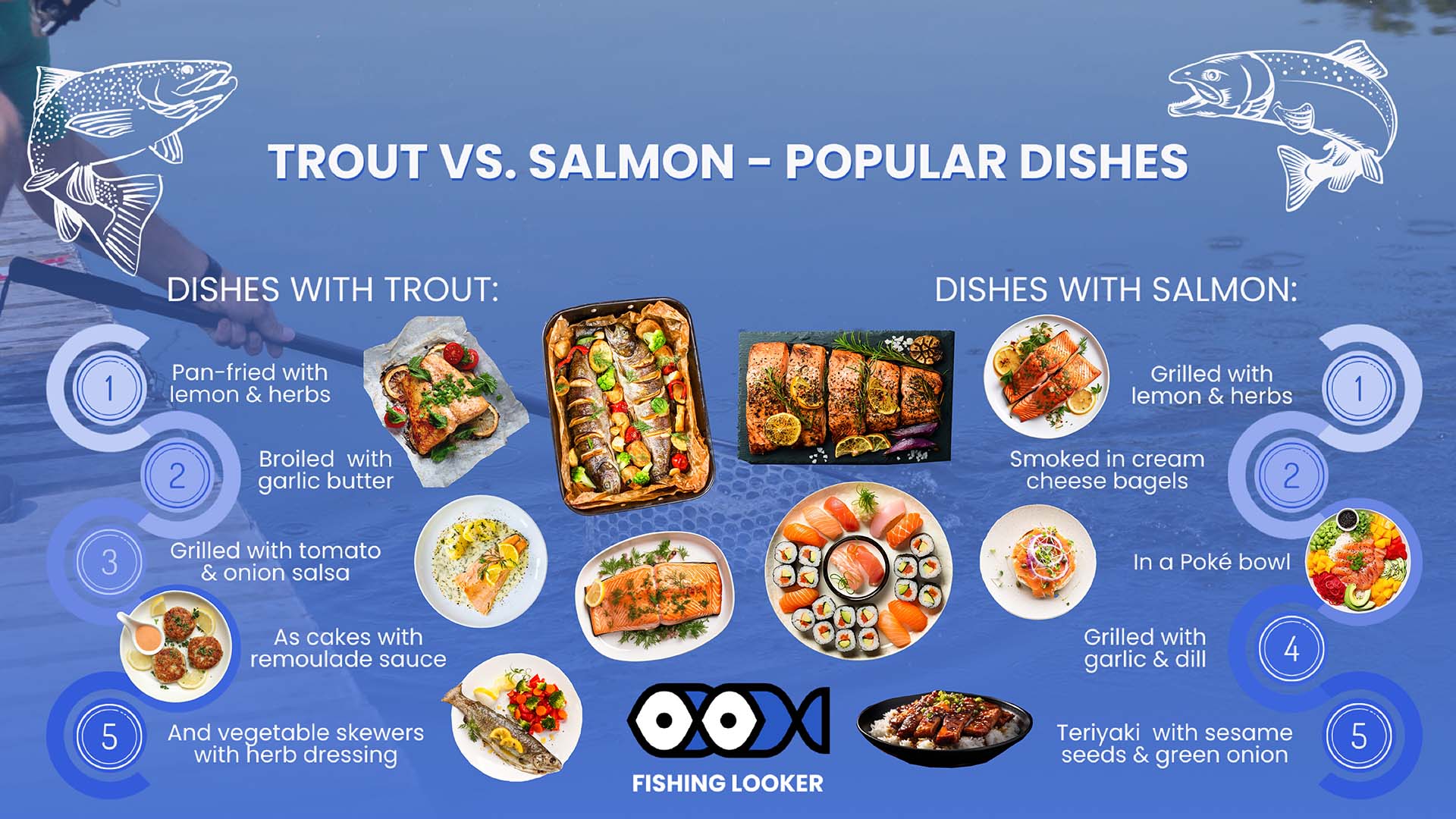
Round 6: Environmental Impact
Both species have a significant impact on their respective ecosystems. Salmon bring nutrients from the ocean to freshwater streams and rivers where they spawn, providing an important source of food for other animals such as bears, eagles, and otters. On the other hand, trout have an important role in nutrient cycling by consuming insects and other prey and excreting waste that fertilizes the water.
Farming These Fish Poses Several Risks to the Environment
As popular food choices, these species are nowadays frequently farmed to satisfy the ever-growing demand. Salmon farms have been criticized for their high levels of pollution, which can damage the surrounding ecosystem, as well as for the use of antibiotics and pesticides that poses a risk of diseases spreading to wild populations.
In contrast, trout are typically farmed in smaller, more controlled environments, reducing the risk of pollution and disease escaping and spreading out. However, like salmon, wild populations of trout can be threatened by overfishing, pollution, and habitat destruction. That’s why doing your part as an angler doesn’t amount to only practicing catch-and-release fishing but also making sure to choose sustainably produced fish to minimize the impact on the environment.
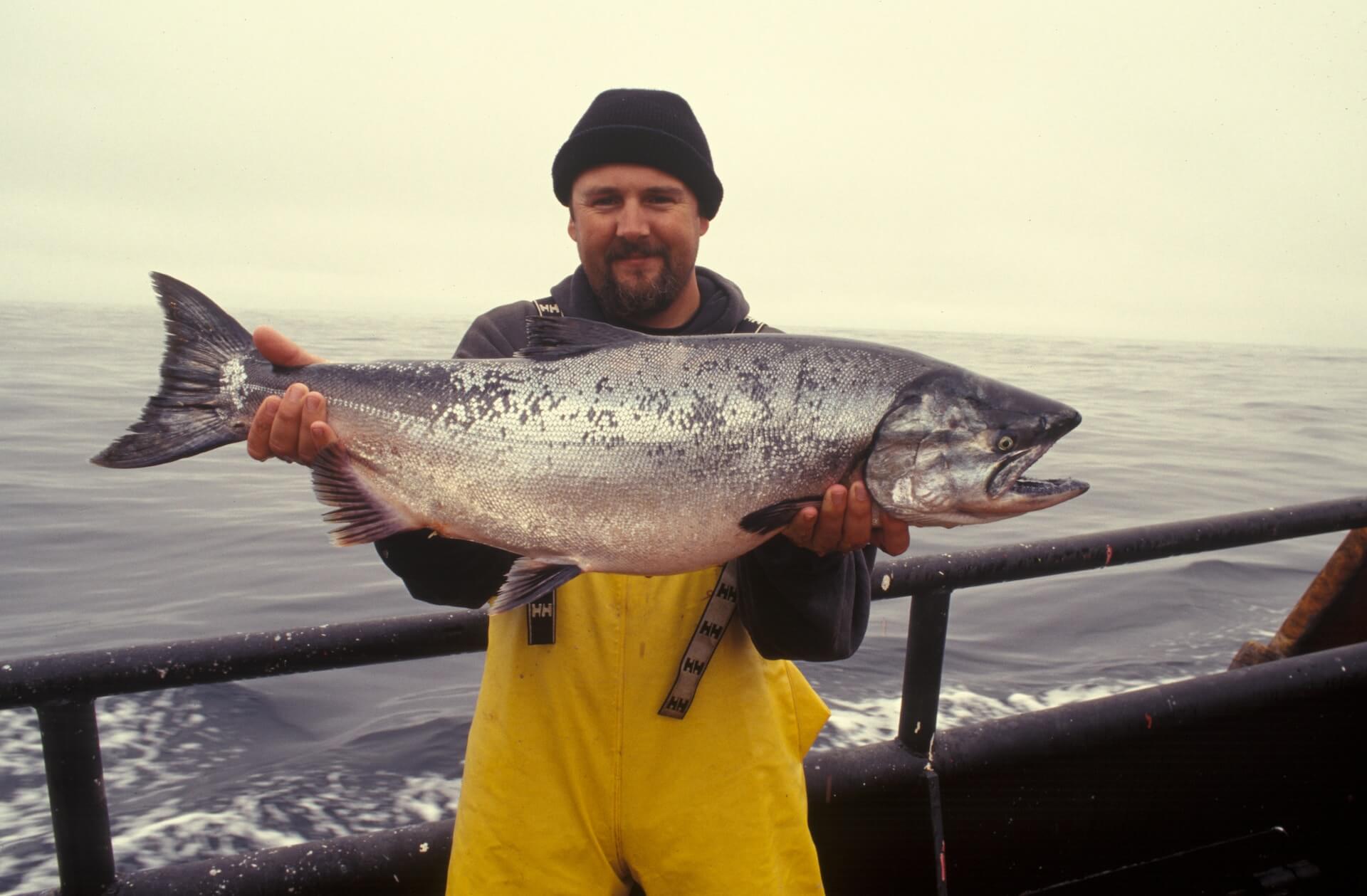
Trout vs. Salmon – It Is Up to You Which One Will Be Your Favorite Catch
All said and done, trout and salmon are two different fish that have their own unique qualities. Although there are significant differences in their preferred habitats and nutritional values, at the end of the day, it’s all up to personal preference and what kind of catch you’re looking for. Moreover, why not explore your options beyond these species on your adventures? You never know what exciting catch will end up as your favorite!
More To Explore

When Is Trout Season? Your Essential Guide to Timing the Perfect Catch
Maya Brown / April 25,2024
Read More »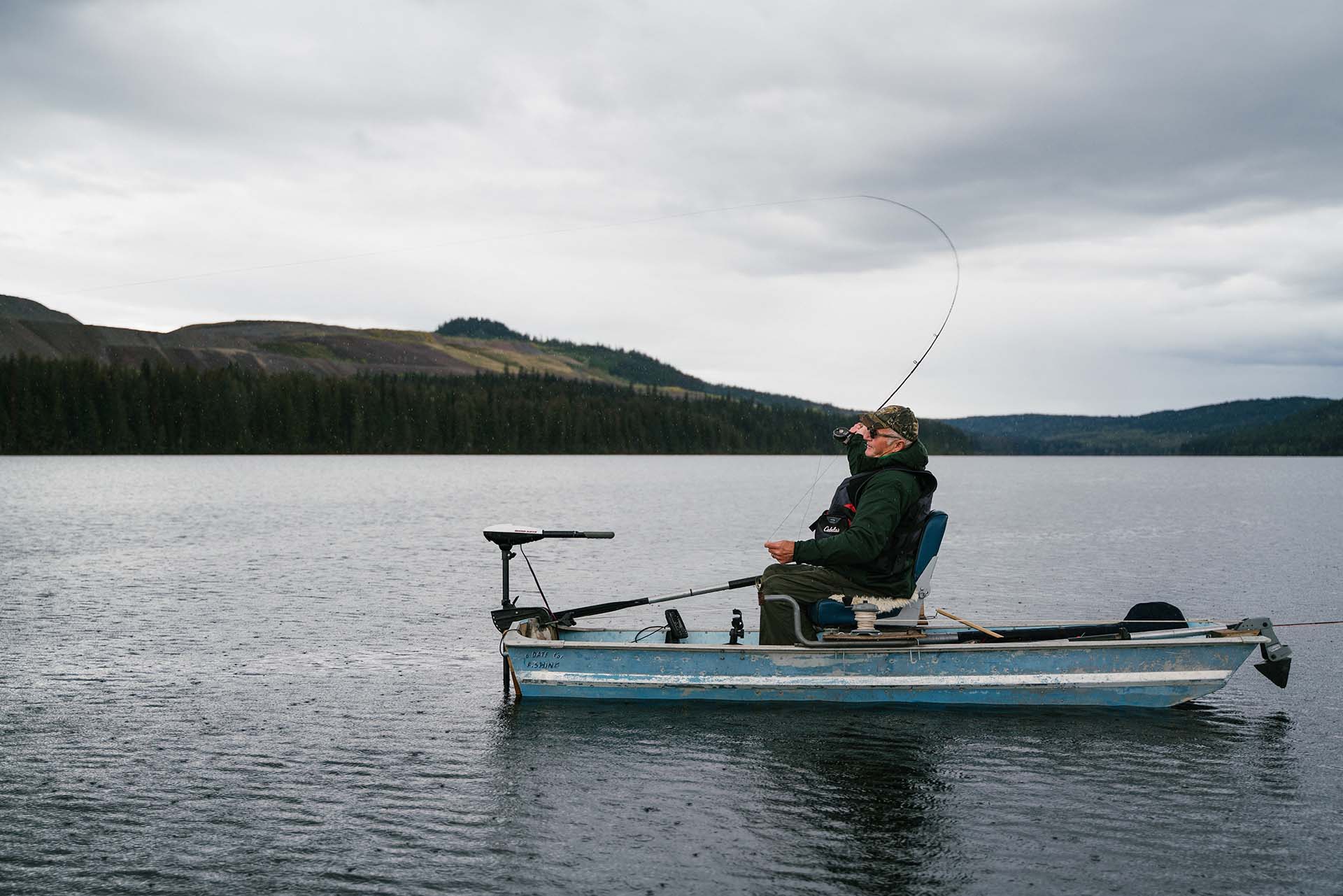
Best Fishing Boats for Small Lakes – Top Picks for Every Angler
Maya Brown / April 22,2024
Read More »

